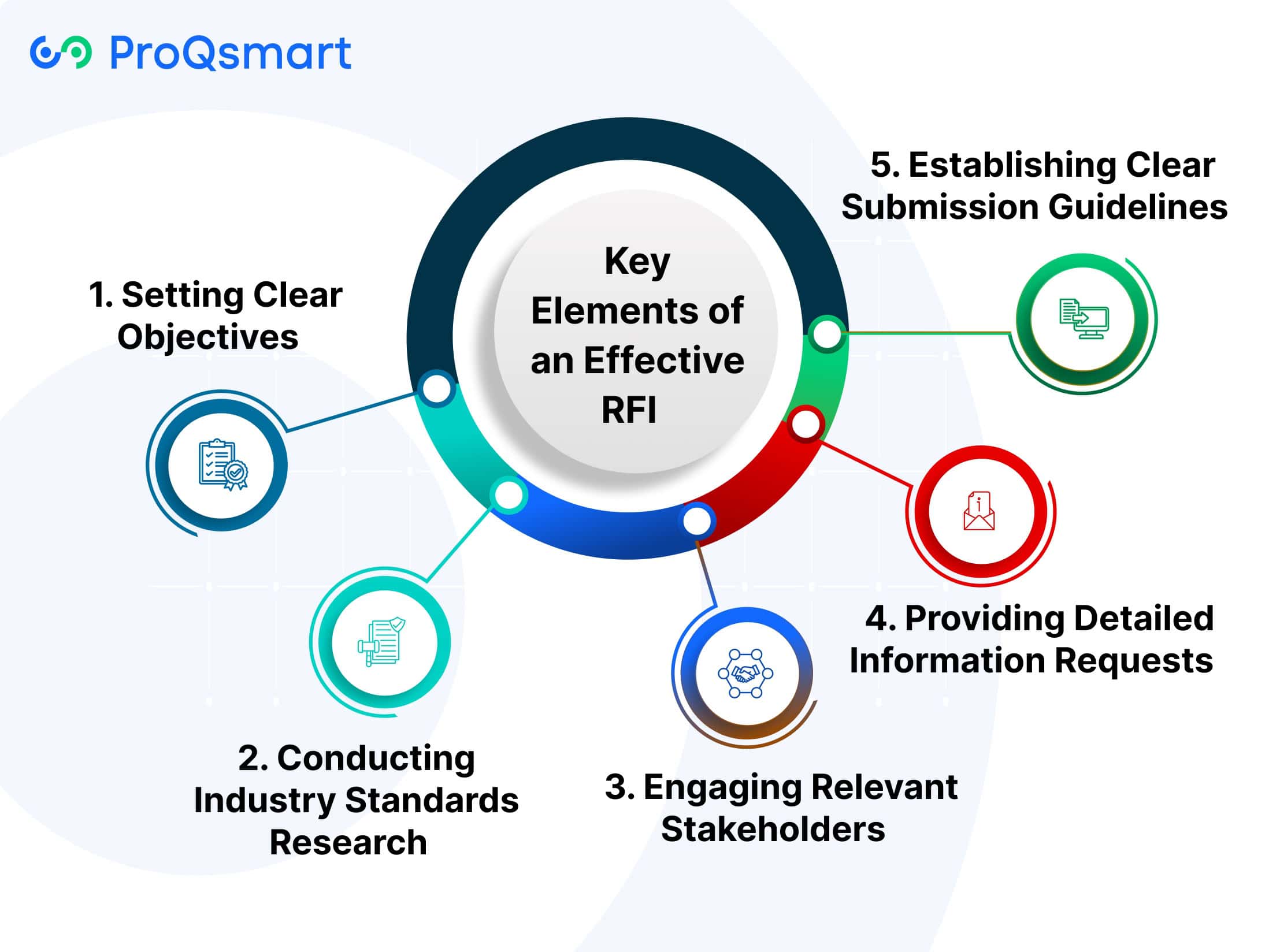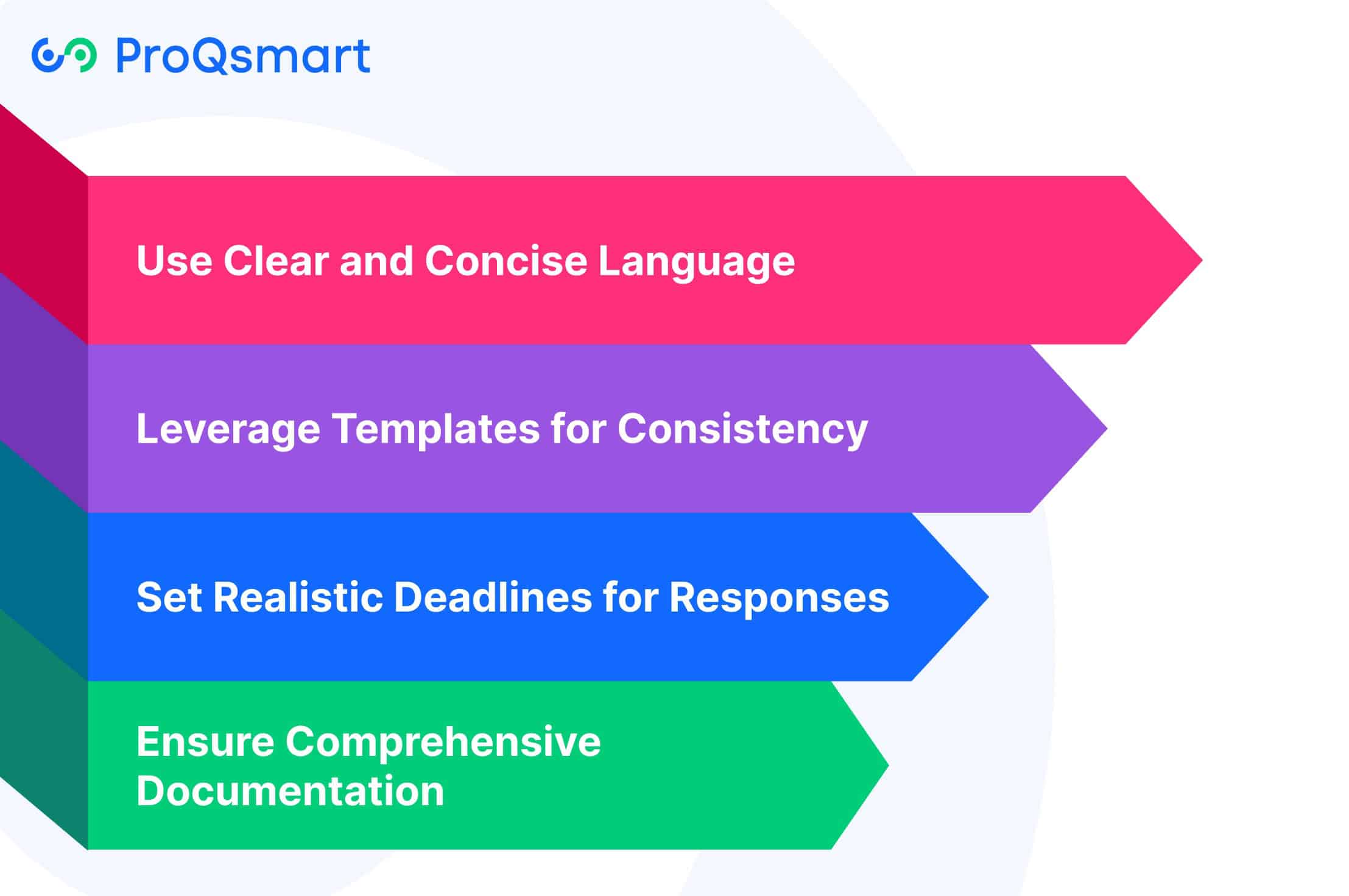A Request for Information (RFI) is a relatively low-commitment, exploratory document that organizations use to gauge vendor qualifications without laying down any formal requirements. RFIs are very much about collecting general information in order to gain a supplier’s track record, market position and range of services.
They are not proposals or quotes, which provide detailed pricing and solutions. For the construction industry, an RFI could ask a potential supplier about their track record in delivering on big-ticket projects.
It can inquire as to their ability to adhere to certain standards. This process allows companies to analyze the market opportunities more broadly, addressing gaps in their research before focusing in on specific decisions.
Purpose of an RFI in Procurement
RFIs make procurement much easier by helping agencies determine supplier capabilities early on. They determine the vendors whose products best meet the organization’s business needs.
This means identifying those who provide software that works inconsistently—integrating, not replacing, with current systems. For example, in a interior fit-out projects, RFI can be used to learn about compatibility with their current infrastructure, saving time during later procurement stages.
RFIs help keep your organizational goals in line with vendor capabilities. This alignment usually increases efficiency by at least 40% and helps shape future RFQs or RFPs.
Importance of RFIs Across Industries
Whether in manufacturing, or construction or hospitality industry, RFIs are critical to understanding supplier capabilities, ensuring better, more informed decisions. They improve competitive bidding too, by making it possible for companies to compare several vendors side-by-side.
For example, an advertising agency may release an RFI in order to solicit creative concepts for an ad campaign. They would then use the responses to short-list agencies with particularly innovative approaches.
Why Tailoring RFIs Matter?
Tailored RFIs focus questions to best fit your industry and project’s unique requirements. This practice improves the quality of vendor responses and encourages a common interpretation of your goals.
This strategy encourages a clear ask, minimizes confusion or misinterpretation, and aids decision-making, all of which leads to saved time and resources.
Addressing Industry-Specific Needs
Each of these industries has its own challenges, and RFIs need to account for those nuances to be successful. To use a specific industry example, in construction, RFIs should focus on ensuring adherence to local building codes, material specifications, and safety regulations.
By including industry-specific terminology and standards, you can better set vendors’ expectations up front to limit any confusion. Scanning previous RFIs and analyzing industry-wide trends can reveal some needs that recur with regularity.
Customizing for Project Requirements
RFIs need to include enough detailed and project-specific information to direct potential vendors to the right solutions. Articulating specific goals, like a short timeline or a tight budget, helps you get responses that fit your needs.
A checklist of non-negotiables—such as preferred materials or design limitations—can ensure rigor and creativity go hand-in-hand. Tailoring RFIs on construction projects aids all parties in clearly communicating the specifics needed.
This proactive approach avoids the risk of delays and cost overruns.
Enhancing Stakeholder Collaboration
Greater stakeholder involvement better informs RFIs and ensures the content is more closely aligned with shared goals. Creating feedback mechanisms while drafting provides an opportunity to invite input from a wider range of perspectives, increasing relevance and specificity.
When misunderstandings happen, these clear RFIs can save up to 90% of the time on the project, due to the collaborative nature of their resolution.
Key Elements of an Effective RFI

A good RFI, or Request for Information, sets the stage for successful procurement by seeking clear insights from potential vendors. This process not only clarifies needs but also saves time and effort, thereby improving decision-making. Attention to detail in each step of the RFI process significantly impacts project outcomes, especially in critical initiatives like construction, where cost and scheduling are vital.
1. Setting Clear Objectives
Setting clear objectives from the start is key to creating a successful RFI. Start by clarifying long-term ambitions that match your procurement objectives. For example, if your goal is to find suppliers with sustainable practices, then your questions should demonstrate that intent.
Measurable criteria, like a vendor’s track record of meeting environmental standards, make it easier to compare and evaluate submissions. Having these objectives documented means everyone is on the same page from internal teams to the procurement process timeline.
This approach is especially important when using ProQsmart. Digital Marketplace successfully merges budget-focused procurement with supplier performance tracking to achieve accurate results.
2. Conducting Industry Standards Research
Understanding what the industry standard is helps guide the creation of content for the RFI that is relevant, focused, and worth responding to. For example, in construction, understanding current building codes or materials specifications helps craft questions that vendors can answer effectively.
Bench marking competitor practices offers a deeper layer of analysis, helping you to further refine your RFI’s scope. Assembling an annotated list of resources, like industry standards or regulatory documents, goes a long way to creating an informed RFI.
3. Engaging Relevant Stakeholders
Identifying and engaging stakeholders early will help make sure the RFI is comprehensive and represents meaningful stakeholder perspectives. Routine engagement with procurement, legal, and operational stakeholders can bring to light important factors to weigh.
Their buy-in encourages accountability, quickening the whole process.
4. Providing Detailed Information Requests
Specificity in the information you request will result in more meaningful responses from vendors. Organizing questions, such as into technical, financial, and compliance sections, streamlines submissions.
Providing samples of the type of response you expect, like drawings or templates for complex answers, reduces confusion.
5. Establishing Clear Submission Guidelines
Detailed submission instructions leave no room for misinterpretation. Set clear deadlines, format specifications, and evaluation guidelines from the start.
For example, providing a clear outline of required documentation like certifications or experience with similar past projects allows vendors to set themselves up for success.
Industry-Specific Strategies for RFIs

Industry-specific strategies are needed to address the challenges posed by an RFI. A thoughtful RFI doesn’t just make internal decision-making more efficient—it helps solve the challenges unique to the project by gathering deep, pertinent intel.
With a firm understanding of industry dynamics, collaboration with industry experts, and use of the proper tools, the RFI process can be vastly improved, providing clarity and efficiency.
Construction Industry Strategies
Construction RFIs should center around design coordination and existing site conditions. All of these components are extremely important in determining the viability and implementation of a project.
Requiring designs to be compatible with site specific conditions is very important. It brings together factors such as soil stability and urban zoning from the start of the project. Evaluating contractors’ past performance on projects of similar scale informs their track record of managing multiple moving parts and delivering on schedule.
Manufacturing Industry Strategies
In manufacturing, RFIs should focus on production capacities and material spec requirements to ensure vendors can produce what is needed to specification. Questions about supply chain management and logistics are essential to evaluate a supplier’s ability to handle inventory flow and mitigate disruptions.
Vendors’ technological capabilities—including use of automation and precision tools—must be carefully evaluated to ensure production capabilities meet the needs of a 21st century manufacturing economy.
Platforms such as ProQsmart cut through the fog with AI-powered analytics that provide actionable insights, improving both decision-making and supplier engagement.
Interior Fit-Out Industry Strategies
Interior fit-out projects demand RFIs that clarify design elements, such as material finishes and layout specifics, to maintain consistency with project goals. Safety compliance is always an important factor, especially in commercial environments.
Inquire about the vendors’ past interior work, like office or retail spaces. This will save you time and money while getting you closer to your quality and aesthetic goals.
Detailed specifications help minimize confusion, and time wasted in the field execution is avoided.
Hotel Chain Industry Strategies
Guest experience and back-of-house efficiency should drive hotel RFIs. For example, requesting vendors to propose solutions that achieve energy-efficient lighting or advanced room automation speaks to these priorities directly.
Vendors should provide information about their customer support in their RFIs. This should include training for new and existing hotel employees to ensure consistently high operational standards.
Evaluating vendors’ capacity to maintain hospitality standards, such as cleanliness and comfort, makes sure they will meet customer standards.
Best Practices for Creating RFIs

Request for Information (RFI) is an imperative formal tool to help elucidate project specifics and avoid expensive mistakes, especially in the financial services industry. When done well, RFIs save time and money, improve communication, and develop better vendor relationships, ensuring a successful project with the right data and insights.
Use Clear and Concise Language
Simple, clear language goes a long way to making sure vendors can figure out exactly what you’re looking for. Don’t use confusing industry jargon or technical terms that will confuse respondents who don’t know your industry context.
For instance, instead of “increase procurement efficiencies,” use “simplify vendor selection.” Taking the time to review RFIs for clarity and completeness prior to sending them can protect projects from unnecessary miscommunication. Not including fundamental elements, like deadlines or contact information, usually leaves recipients scratching their heads and slows down answers.
Structuring RFIs with clear, actionable language encourages immediate engagement from vendors, allowing them to shift into solution-oriented thinking.
Leverage Templates for Consistency
Standardized templates help to streamline the RFI creation process and ensure consistency across projects. Further customizing those templates for certain industries, such as construction or manufacturing, increases their resonance.
This method not only saves your team hours in drafting new RFIs but also keeps a library of these templates for easy retrieval for later use. ProQsmart simplifies your procurement procedures with the most competent tools available. Its features, like automated workflows, e-tendering, and document management, drive efficiencies and increase standardization.
Set Realistic Deadlines for Responses
Providing realistic timelines allows vendors to have the time necessary to prepare well thought out responses. Providing clarity on all deadlines involved eliminates confusion and helps you receive submissions on time.
Vendor workload is an important consideration. For example, releasing RFIs during a specific geographic area’s busiest procurement cycles might mean changing timelines to work within their capacity. This tactic encourages partnership and mutual appreciation, resulting in more thorough and meaningful responses.
Ensure Comprehensive Documentation
Proper record keeping of all RFI-related correspondence provides an excellent record of what worked and what didn’t that can be referenced in future projects. Keeping all vendor responses on hand not only upholds transparency, but good practice calls for developing an understanding of lessons learned to better inform future RFIs.
For instance, documenting recurring issues can guide you in eliminating inefficiencies. With ProQsmart’s audit-compliant sourcing data, you can track and review supplier performance with ease. This enables rapid, evidence-based decision-making and fuels ongoing, long-term process improvement.
Analyzing and Evaluating RFI Responses
Evaluating RFI (Request for Information) responses is an important step in the procurement lifecycle. This phase ensures that we’re judging vendors with both accuracy and equity. By establishing a structured approach, procurement professionals can make well-informed decisions, align vendor capabilities with project goals, and maintain transparency throughout the process.
Here, we share real-world strategies to improve the way they analyze and evaluate RFI responses.
Steps to Analyze Responses Effectively
Start with a set of evaluation criteria tailored to the unique needs of your project. This checklist will help you objectively compare and score vendor responses, and will help you make sure that every detail gets considered.
For example, if the RFI’s purpose is to find a new source for sustainable materials, criteria could address the certifications, sourcing practices, and environmental impact.
Engage a cross-functional team throughout the analysis. A diverse team of procurement, finance, and technical experts provides hands-on advice. This diversity helps to minimize bias and increases the credibility and reliability of the evaluation.
We think it’s as important to document the analysis process. Well documented evaluation helps to guarantee transparency and provides a clear record to audit later or revisit if decisions need to be reevaluated.
Metrics for Evaluating Vendor Responses
Key performance indicators (KPIs) like delivery lead time, pricing compliance, and historical project execution performance begin to provide a data-driven view of vendor performance. Pair qualitative metrics such as innovation or customer support with quantitative metrics to develop a full picture.
Make sure every metric is aligned to your project’s goals. If, for instance, speed is most important, assign a greater weight to lead times in the overall scoring rubric.
Tools to Simplify Response Analysis
Take advantage of procurement software, such as ProQsmart, that harness AI to make procurement smarter and more efficient. ProQsmart streamlines bid management, automates bid workflows, and gives you real-time tracking.
Centralized databases assist in sorting and cataloging vendor responses, and visualization tools, such as dashboards, can display the results of the analysis visually to support decision making.
Conclusion
Creating a thoughtful, organized RFI helps ensure better decision making and better partnering. By concentrating on the right end goals, the critical details that matter, and the right evaluation approach, you can cut through the chaos and achieve greater impact. Customizing RFIs to suit your relevant industry and specific needs helps you get the best and most useful insights while avoiding unnecessary time or resource expenditure.
By taking a strategic approach to RFIs you’ll put yourself ahead of the competition in a hot market. It helps establish trust with vendors and provides you with insights to make informed decisions with confidence.
Be realistic, be honest, and never sacrifice transparency. As you can see, with these steps RFIs can be a simple tool to help you push for success. To further enhance your RFI processes and achieve optimal results, consider leveraging ProQsmart. ProQsmart offers advanced features that streamline RFI management, improve collaboration with vendors, and provide valuable analytics for informed decision-making.
Ready to transform your procurement strategy? Book a demo with ProQsmart today and discover how our solutions can help you sharpen your RFIs and open new avenues for better procurement results.




